Take it from former race-car driver Johnny Unser—checking for telltale warnings of a worn-out tire is more important than you think.
“Checking your tires is like going to the dentist,” says Unser, five-time veteran of the Indy 500. “It’s something we don’t do often enough, that we put off until we absolutely have to.”
According to the National Highway Traffic Safety Administration (NHTSA), tire failure causes around 11,000 car crashes each year. Both Unser and NHTSA recommend doing a quick tire inspection once a month to see if you need new tires.
How To Tell If You Need New Tires: What To Look For
- Bulges, gouges or cracks
When a tire deflates, it bulges at the sides. Unser says this is a sign of low tire pressure or a slow air leak. “If you see cracks in the sidewall, gouges or anything that looks odd, take it in to your dealer and have them look at it.” - Tread wear
One of the best ways to tell if you need new tires is the old-school penny test: Place a penny into the tread, with Lincoln’s head pointing down. If you can still see the top of his noggin, the tread is dangerously low. Most modern tires, however, have wear bars: bits of rubber woven into the pattern at a specific depth. “You can find the wear bars that go across the groove, and if the tread pattern is worn down to that wear bar, you need to replace your tire,” says Unser. - Tire pressure
Tires deflate at a rate of about one pound per square inch (PSI) per month. “You’re not going to wear your tires down in a month,” Unser says, “but you should check that you have the right inflation pressure.” - Temperature Changes
Tire pressure drops in extreme cold. The challenge in summer, says Unser, is “excessive heat buildup in the tire.” If you’re heading out on a road trip with an underinflated tire, it will generate more heat and wear out faster. - Vibration
Watch out for vibration or thumping when you’re driving. If it feels like it’s coming from under the seats, the rear tires may be out of balance. Vibration from the steering wheel could indicate suspension issues. Unser says anything less than a smooth ride means you should take your car in to the dealer.
When it’s time to replace your tires, Unser recommends doing so in pairs or all four at a time for better performance and traction and, ultimately, a safer ride.
From a flat tire to a car that won’t start, be ready for anything with GEICO’s 24-hour Emergency Roadside Service.
By Maria Carter
Next article: Top 5 Tire Myths Debunked



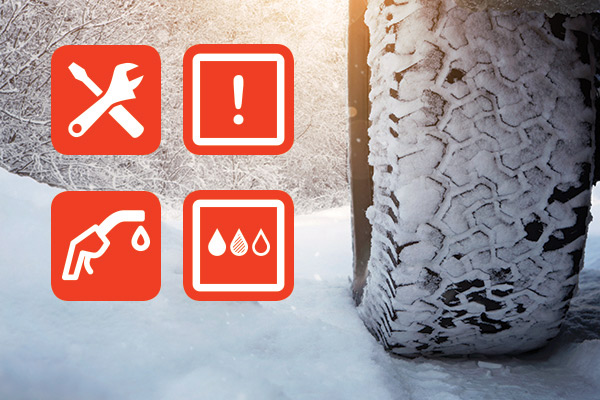
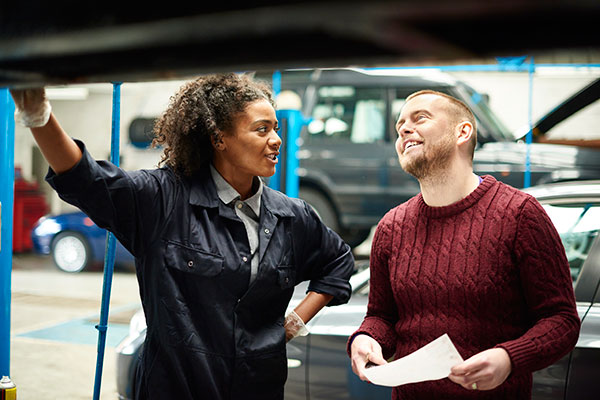
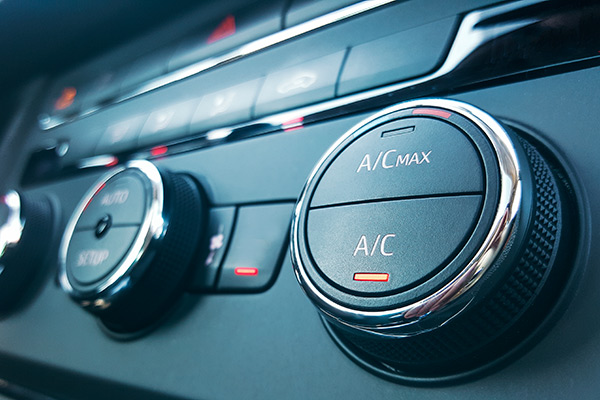
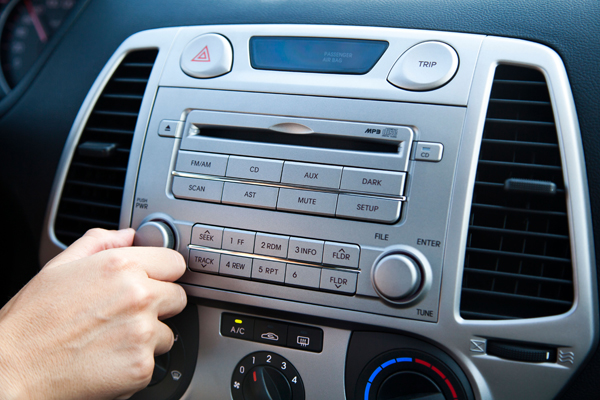
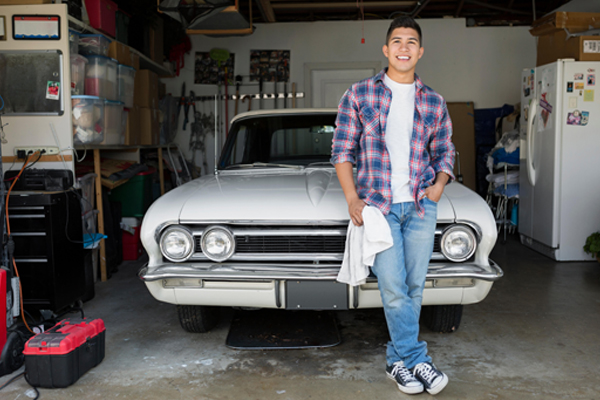

Joan L Kramer says,
Is it true that tires deteriorate with age? My car is 10 years old, but, like the classic little old lady which I am, I have only 22,000 miles on the car. I was told by the dealer that the tires should be replaced because they rot with age. Is this true?
E Car says,
Yes it’s true. Sun exposure is one reason, but the rubber compounds do deteriorate like anything exposed to environment. However, if you drive with caution as I expect you do, there shouldn’t be any major concern to replace your old tires immediately. More risk is at highway speeds and excessive cornering. Old tires may show signs of hairline cracking along the sidewalls and perhaps always need to be filled with air more often as they’ll begin to loose ability to seal, will,signal it’s time to replace. There is a date code on tires, sometimes tires will look brand new on the outside but looks isn’t a gauge to their safety. There’s also many technological advances in tires than 10 yrs ago too.
DB says,
Do tires have a shelf life? Should they be changed by time even if there is no visible cracks in sidewalls and tread is like new. Vehicle is in Arizona and driven very little.
Ecar says,
Yes. The date code in along the sidewall. There’s a set of numbers in a little oval right after a series of DOT numbers and letters. Hairline cracks may appear if there’s excessive sun exposure in AZ. Should tires be changed due to age is a matter of what driving style will be done, like no highway speeds. Economically, around town driving on tires that are old may no present a dire need to replace immediately or at least until they stop holding air. You’ll still have to feel comfortable driving knowing your tires are safe. Nobody wants the liability for tire failure by saying old tires are ok to drive on.
Brad Cristy says,
You are not riding on air! They are tires that need regular attention. In this era, the idea that the most stylish and extreme vehicles must have the lowest profile tires and the largest diameter wheels, is an ill-conceived idea without regard for passenger safety.
Any private pilot knows the importance of preflight inspections; our highway vehicles should get the same concern. After all, your life depends on it. The “RONCO” mentality of ‘turn the key, drive it, and forget it.’ is what deadly crashes are made of. The fact that a race car driver will invest the time to go to the pit just for a 1 or 2 psi adjustment in a tire should be an emphatic example for all of us to follow . Several years ago a major tire manufacturer unjustly had to remove and destroy good tires from only one manufacturers SUV’s and Lt Trucks. None of the vehicle engineers that addressed the issues of a “rough and hard” ride by recommending to lower tire pressure to give a “softer” ride, were never held accountable the for heat build up at highway speeds, that resulted in a “run flat” tire failure. Whether by gross ignorance or “corporate damage control” (or cover up) the finger was pointed at the WRONG industry. The moral of the story? When it comes to tire pressure: Less is NOT GOOD.
Mike Lowe says,
Be careful when you take your car to a oil change place that tells you that they checked the psi in your tires. They think all tires run 32 psi and will lower the pressure 20 pounds and send you on your way
Jim Duffy says,
Where can I have my tires checked without salesman ?
Ecar says,
Good question. A dedicated tire shop can be like a used car lot, getting sold on oil change, alignment and wipers and host of supply chain shortages, pending price increases, etc. Knowing needing a set of tires is one thing, they get you with the extras (want fries with that?) Car dealer service writers are also in the “up sell” business, but they didn’t pressure to tire sale.
Where to go just for an inspection… try a local mechanic who doesn’t deal in tire sales. You can check a tire date code yourself, but basically the things they’ll look for is wear pattern and tread depth which is also DYI. Maybe they’ll ask about shimmy, or wandering which could be simple fix as tire inflation or expensive as front end suspension, so be sure you know how your car drives with the current tires.
Jason Miller says,
I live in New England. Because they use salt on the roads and the weather we have, tires rot after 4 years. The brand does not matter. If you keep them on the car for 5 years or longer, even if they still have “good” tread, you are risking a blow out like I had one day because the sidewall blew out. The tire was rotten. The Geico service person pointed out the dried up and cracked sidewalls on all my tires and explained this to me. I immediately went from there to Costco and purchased 4 new tires. They said my spare was still good for now but they would check it for me every 5K miles when I had the tires rotated for free.
Robert says,
Good Advice!
Stopping by any Americas Tire store and having a free tire pressure check four times a year is what I do.
Never had a flat tire or problem requiring a tow, they (American Tire) always have prevented or spotted issues before they happen and it is a free service anywhere in Southern California.
Chris Townsend says,
Sun damage to my Terrains tires shows up as cracks along the top outside of the tire, and can result in tread separation, so I bought a set of four new ones! Thanks for the inputs.
Mary Walter says,
The information was much appreciated.
Darrell Smith says,
Not all tire pressure monitoring systems alarm when 25% of the air pressure has been lost. Some are much more sensitive…..with as little as 3 PSI causing an alarm(less than 10% loss for the average tire inflation). You might want to edit your tire tips to reflect this fact.
Jim Hayes says,
I rotate them with every oil change and I follow your guidlines on when to change tires.
Dave From Georgia says,
The last time I had my oil changed I was asked about the age of the tires on my car. It is a 2004 that don’t drive it a lot of miles. The tires still look real good but they suggested I replace them because of the age anyway. It is parked under a carport and not out in the weather. I have been checking my tires by keeping the pressure correct and looking at them from time to time. Never thought much about the age.
Kaye says,
I have a 14- year-old car that still does not have 100K miles on it. I am 78 and only drive to where I have to go, about 3000 miles a year. Change the oil once a year(!) with high-mileage oil and prem. filter. When my last set of tires were 7 years old, I noticed the sidewalls looked cracked, even though there was good tread left, so I replaced them. I do get the tire pressure checked every 2 or 3 months, since it’s free where I buy my tires. Rotate them every 2 years. There is a doughnut tire in my trunk that I have failed to maintain (and should), but I have never had a flat with this car.
Sarah from Wisconsin says,
Great article.
Gary Roth says,
I used to run a national branded auto center and 20 years ago we warned our customers that 90% of tire failures occurred during the last 10% of a tire’s life. I’m pretty sure that still applies. We also found that the most expensive tire one could buy was the cheapest one on the rack. We calculated that by safe miles the tire ran compared to its cost. The better quality tire always delivered more miles per dollar than the less expensive one. If you wanted to split hairs, the better tire usually delivered better performance as well. I still watch the tires of vehicles around me and some of them are frightening. Bulging tires, gross out of balance, under inflation, obvious toe in error or out of camber conditions are all too prevalent on vehicles driving at high speeds on our highways. This is deadly!
Diane says,
I agree Gary. Never split hairs on anything necessary to maintain my beloved car. My life is worth more than the few dollars I would save on a cheaper brand tire. My car came factory equipped with Pirelli PZero Nero Z rated tires; that’s what it gets when they need to be replaced. PERIOD.
Old Smartie says,
That depends on what you mean by “Change your tires”. They aren’t like diapers you know! I replace my tires before they get to the tread bars, or after 5 years even if the tread bars aren’t showing unless they have been stored. Out of round, cracked, or tires that have survived a crash get replaced. Who knows what all the force did to the bodies of the tires. If you mean rotating the tires, about every 10,000 miles for high way cars and as needed for tires that see a lot of dirt road use.
I’m 61 and haven’t had a blowout since I was 17!
Rox Wooden says,
Very good info! thank you
Judith Ann says,
Thanks for the information some I knew already some was added to. It’s greatly appreciated.